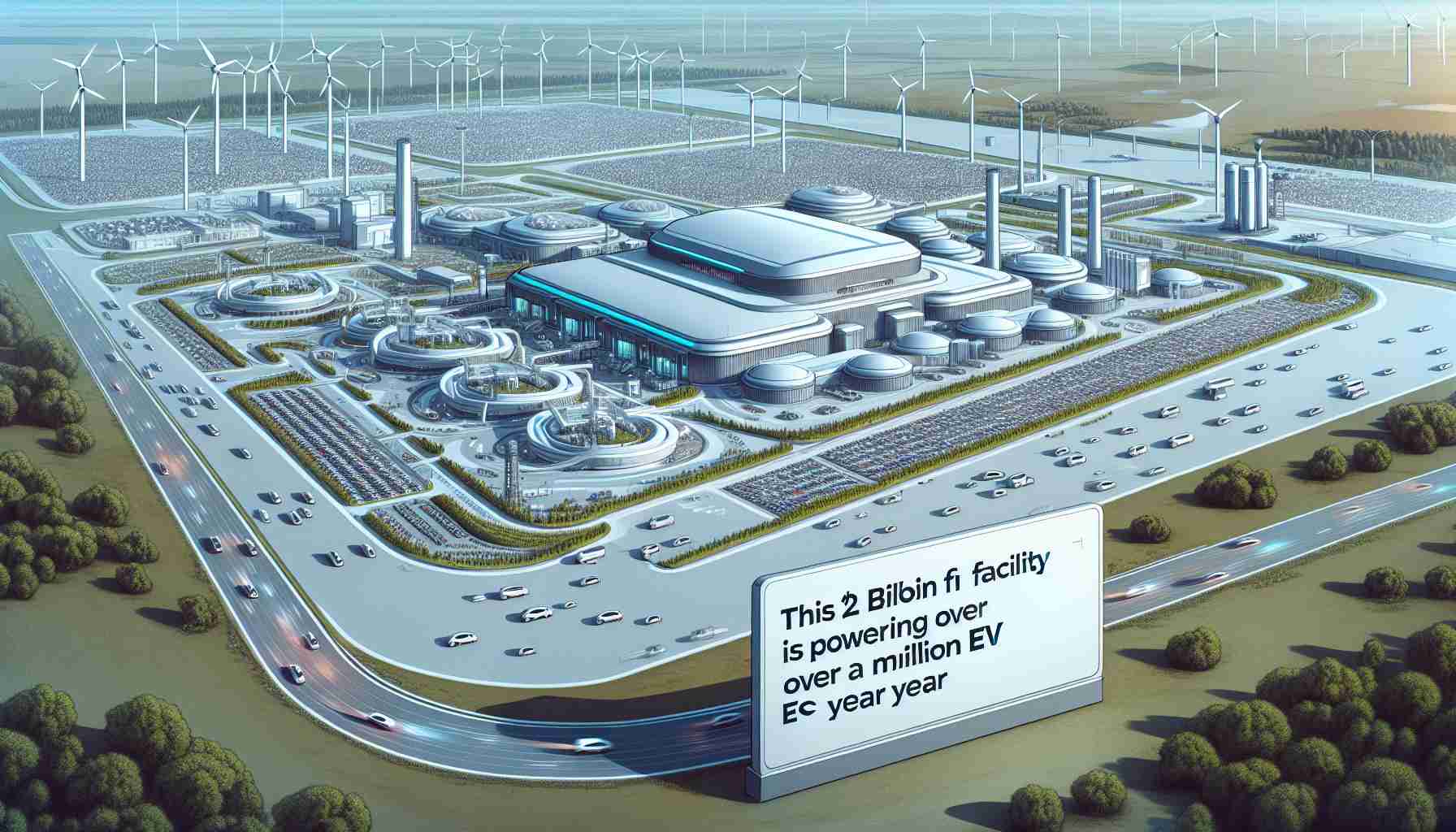- Morocco has launched COBCO, a cutting-edge battery production facility, set to transform the electric vehicle industry.
- This project is a collaborative effort between CNGR Morocco New Energy and Al Mada, highlighting Morocco’s emerging role in the green technology sector.
- Located near Jorf Lasfar, COBCO focuses on producing nickel-cobalt-manganese materials for lithium-ion batteries with a $2 billion investment.
- The facility aims to produce 70 gigawatt-hours of energy annually, powering over 1 million electric vehicles.
- Future plans include expanding production to lithium-iron phosphate materials and developing advanced recycling technologies.
- COBCO signifies a paradigm shift towards sustainable transportation and positions Morocco as a pivotal player in the global EV supply chain.
In a dynamic stride towards a sustainable future, Morocco proudly unveils a groundbreaking battery production facility that’s set to revolutionize the electric vehicle (EV) industry. This ambitious initiative, named COBCO, arises from a strategic alliance between CNGR Morocco New Energy and Al Mada, marking its presence as a key player in the global green technology market.
Strategically nestled near Jorf Lasfar, this cutting-edge facility is already humming with activity, focusing on crafting essential nickel-cobalt-manganese (NCM) materials for lithium-ion batteries. With a staggering $2 billion investment, COBCO aims to forge a robust, sustainable battery supply chain. Once fully operational, the facility is projected to deliver an astounding 70 gigawatt-hours of energy annually—enough juice to power more than 1 million electric vehicles!
But the story doesn’t end there. COBCO has its sights set on the future, with visionary plans to broaden its production capabilities to encompass lithium-iron phosphate (LFP) materials and cutting-edge recycling technologies. This innovative push not only elevates Morocco’s industrial clout but also establishes Chinese companies as vanguards in the rapidly evolving automotive world.
Imagine a future where electric mobility thrives, propelled by a reliable local supply of battery components. This Moroccan venture is a game-changer, fostering a sustainable paradigm shift and reshaping the global EV supply network. As each battery rolls off the assembly line, Morocco inches closer to becoming an indispensable hub in the race toward eco-friendly transportation.
This electrifying revolution in mobility is just beginning, and the world is watching as Morocco leads the charge into a greener tomorrow!
Revolutionizing Green Mobility: Morocco’s Ambitious Battery Venture
In an era where green technology is rapidly advancing, Morocco is making headlines with the launch of its groundbreaking battery production facility, COBCO—an ambitious project designed to transform the electric vehicle (EV) industry.
Market Forecast and Impact:
1. What are the future market trends and predictions for Morocco’s battery industry?
Morocco’s battery production initiative is poised to significantly influence the global green technology market. With COBCO’s estimated annual output of 70 gigawatt-hours of energy, Morocco aims to meet soaring global demand for EV batteries. Analysts forecast Morocco’s market position to strengthen, potentially capturing over 10% of global EV battery production by 2030. This will likely lead to increased foreign investment and stimulate the transfer of advanced technologies to Morocco.
2. How does COBCO’s facility compare to other global battery production plants in specifications and capabilities?
COBCO’s facility, once fully operational, is expected to rival major global battery production plants by focusing on high-quality nickel-cobalt-manganese (NCM) and, eventually, lithium-iron phosphate (LFP) materials. This diversification strategy distinguishes it from competitors, offering versatility in battery material supply. With a $2 billion investment, COBCO’s state-of-the-art facility integrates cutting-edge recycling technologies, positioning it as a leader in sustainable battery production.
3. What are the environmental and sustainability implications of Morocco’s new battery production facility?
COBCO’s emphasis on sustainable practices highlights Morocco’s commitment to eco-friendly industrialization. The plant’s focus on NCM and LFP materials supports reduced carbon emissions and minimizes environmental impact. Furthermore, the incorporation of recycling technologies aims to decrease waste and improve resource efficiency, setting a precedent for greener manufacturing in the automotive industry.
Innovations and Features:
– Production Capability: The facility is designed to produce nickel-cobalt-manganese (NCM) materials initially, with the potential for expansion into lithium-iron phosphate (LFP) production. This flexibility allows for adjustments based on market demands and technological advancements.
– Recycling Technologies: COBCO includes cutting-edge recycling processes, enhancing its sustainability credentials by reducing waste and promoting the reuse of scarce materials.
– Strategic Location: Situated near Jorf Lasfar, the facility’s location provides logistical advantages, contributing to reduced transportation emissions and costs.
Security and Compatibility:
– Supply Chain Robustness: By establishing a local supply of essential battery components, Morocco increases its domestic security and resilience against global supply chain disruptions.
– Compatibility with Global Standards: COBCO aims to adhere to international standards for battery production, ensuring compatibility and acceptance in diverse EV markets.
Related Links for More Information:
To learn more about sustainable energy advancements and investments, check out these resources:
– CNGR New Energy
– Al Mada
Through strategic innovation and investment, Morocco is not just participating in the green revolution—it is driving it forward, ensuring a prosperous and sustainable future for the global EV landscape.














